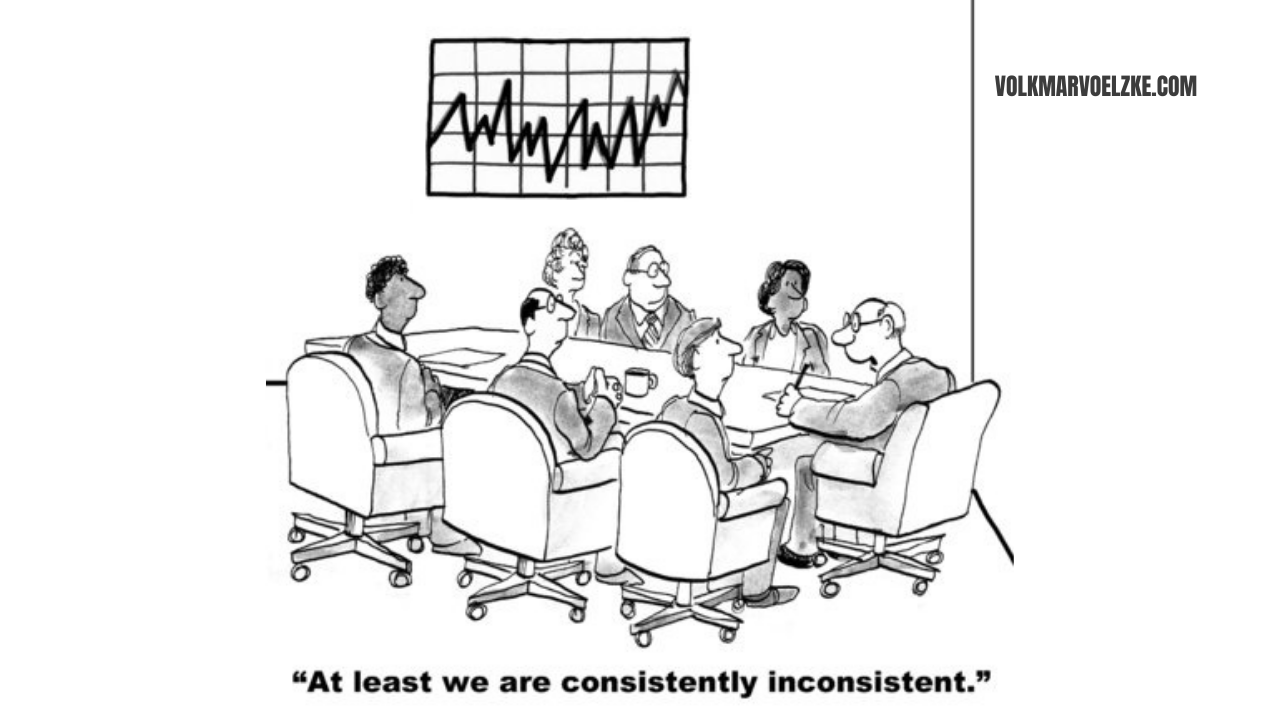😬 The Biggest Difference Between Success And Mediocrity

If you asked me what is the biggest difference between those people who consistently succeed no matter the circumstances, and those who fail or stay mediocre it is this:
The consistently successful ones follow a simple yet extremely powerful process each time they face any kind of challenge:
- Accept the challenge
- Learn
- Take massive action in a new direction
Does this sound overly simplistic? Then think twice and check the last challenge you mastered successfully, compared to one at which you failed. Chances are high that in the successful case, you followed exactly these 3 steps, perhaps even subconsciously.
In contrast, mediocre people and organizations follow a different process:
- Deny the challenge or be overwhelmed by the challenge.
- Try to figure out a solution by yourself.
- Make little hesitant steps.
- Complain how tough it all is.
This is NOT exaggerated, but exactly the pattern I see over and over again in companies that struggle to succeed boldly. Here comes t...
🙈 Your Ignorant Mind

A couple of years ago, one of the best violinists of the world, Joshua Bell, participated in an experiment.
The artist, whom people easily spend 500 dollars to see in a concert hall, was playing in the entrance of a subway station. He selected some of the most exciting compositions for his unusual “concert” and played them with the same virtuosity and passion on his three million dollar Stradivarius that he played with at his highly paid concerts.
The results of this forty-five-minute experiment were eye-opening if not surprising for many: hardly any of the more than 1000 people who passed him during this time noticed him, even though the music was loud and clear. A very few listened for some seconds or minutes, and only a couple of people gave money.
There are several aspects to this situation. However, two of them struck me:
- There was a lottery booth directly beside the musician where people constantly lined up to buy their lottery tickets. None of these people, who were in fac ...
🧩 Every Little Bit Matters!

What is your strategic focus? Is it being more cost effective than every other player in the market? Or do you strive to be seen as the most innovative company in your market niche? Or do you prefer putting all your focus on outstanding customer relations?
Whatever your main goal, the most important thing is to become excellent in your strategic focus area. If you want to excel in all three dimensions (cost effectiveness, innovation, customer centricity) then you have to become excellent in all three areas.
What does “excellence” mean? Very simple: to be better by far (in the perception of your potential and current customers) than the vast majority of your competitors or even (with the lack of true competitors) than the expectations of anybody else.
Everything else is mediocrity, which leads to low performance and the daily fight for survival. I am amazed how many business leaders do not see the clear relationship between lacking excellence and low performance.
Next question: Ho...
📈 Your Corporate Growth Mindset

The most successful businesses have a growth mindset. All of them. No exceptions. What is more, they have a mindset of passion and enthusiasm, most of the time also a mindset of happiness.
There is not one long-term successful and competitive organisation on earth that has a fixed mindset, grumpy people, no spirit, and unhappy customers. Not one!
So, why do then so many companies run with high complacency (“we don’t want to change!”), lacking enthusiasm, and surely missing happiness? Look around in your business: as long as you do not belong to the top one percent of outstanding organisations, you’ll find signs of mediocrity all around you.
The key challenge for most is that a growth mindset requires your own readiness to grow, each day, each hour, and each minute. To learn and improve. To listen and adjust. My key question is always this: How many hours do your team members (and yourself) spend learning each week? If the answer is less than 4 hours per person, you have an issue!...
😖 Why You Don’t Succeed

Most leaders know quite well what to do to grow the success of their team and their business. Many even initiate the right actions and initiatives.
The issue: more often than not, these initiatives do not lead to the expected results or the effects could be much more substantial.
Why is this? The keyword is “inconsistencies”. Inconsistencies are relatively easy to spot for somebody external who sees a team or an entire organisation from the outside, but they are very difficult to see if you are “part of the system”.
Example: When I arrive any company’s reception for the first time, I sense immediately how important customer care is in their culture. The friendliness and professionalism of the receptionist, design of the welcome area, and presented brochures tell me a lot about their focus areas. Then, when the CEO later tells me about the importance of customer service, I already know if they have inner conflicts that prevent them from achieving maximum results.
The guest recept...
🔥 Ignite The Fire In People!

Isn’t this remarkable? During my workshops with leadership teams, the greatest results are always achieved when people work passionately on creating results. Personal mood, background, environment, co-workers, and other factors play a surprisingly minor role when it comes to producing results. All that counts is the dedication and passion of the team members.
This is why in the most impactful speeches and seminars content delivery is only a small part (which you could otherwise read in a book or watch a video on YouTube). Indeed, what matters is how much the speaker ignites a fire within us.
I even take it a step further: almost all people by nature have a fire burning within them that wants to get out.
Just watch children when they are playing, or take a look at adults at my seminars when they are doing role plays or the like. Even the most introverted person starts contributing and presenting with joy and passion.
Hence, most managers wrongly attempt to suppress the fire, rewa...
☹️ Do You Give Up Too Early?

One of the most important characteristics of great achievers is their persistence and resilience. Those who you see in the limelight today virtually never succeeded just because of ONE strategy or ONE plan. They succeeded because they constantly see setbacks as a chance to try something new.
I’m sure you know this as common sense. Here comes the twist for you as a business leader:
We all can train our capabilities to be resilient.
However, instead, what most companies do is exactly the opposite: they try to squeeze their people into a one-trial-no-mistakes culture.
Even if a zero-tolerance policy makes sense for ensuring predictably high quality, it also kills the motivation and even the capabilities of your people to be persistent and resilient enough to manage strategic changes. Why? Simply because the mental muscle is not trained. It is like a corset: tensed up muscles will become stunted.
A significant number of businesses suffer from the incapability of their managers to s...
🔝 What Is Your True Priority?

For any business, you as a customer can easily spot the true key priority of the vendor. It doesn’t matter which shiny statements they communicate on their websites or in their stores.
The truth immediately reveals itself as soon as you start interacting with them.
Examples:
- Sales people in a store talk to each other instead of looking for customers.
- When I ask a sales person for something specific, this person only points me to the shelves, “over there” without even asking if they can help me find the item.
- On a website, I don’t find within 5 seconds, an easy way to get in touch.
- The sales person doesn’t offer me any alternative, if they cannot find a solution for my primary demand.
- The company is not at all interested in my motivation to buy, but just focused on their products.
The list could go on and on. The key point is this: People’s true priority is not something you can hammer into their mind. Instead, the behavior of each and any person is triggered by their beli...
🙋 Can I Buy More, Please?

Here is how any business can easily increase their sales by 10 percent and more. Even if the technique is simple, only a few ever apply it.
The fact is: Most businesses ask their prospective customers for less of what they would be willing to spend if – yes: if – they just would be offered something of more value. Many customers are ready to buy more, but are never asked.
Here are 3 ideas on how to tap into the full purchasing potential of your customers:
- For each basic product or service that you offer, create an advanced and a luxury version. Be creative! If you sell engineering, offer a speed upgrade. If you sell components for machines, offer a complete service and maintenance package. If you sell home cleaning services, offer a regular cleaning check at a flat rate.
- Attach an attractive name to these additional packages which communicates higher status, value and security. The message must be: You will feel better with this package. We raise your status. We help you becom ...
🥹 What To Do When Things Go Wrong

You know me: most of the time I am writing and coaching about the positive aspects of life and business. I do this on purpose: all change comes from positive energy, all creativity stems from positive thoughts and all meaningful relationships–no matter if professional or personal–stem from positive assumptions about the other person.
That doesn’t mean successful people never have negative thoughts. Sure, they have! However, what they are better at than the rest is turning these negative thoughts into positive energy to generate change.
While average people get stuck in misery and helplessness, the overachievers are already on their way out.
So let’s get serious: I know that you sometimes struggle with your business, your team, or your career. I know that sometimes life and business really can be hard. I went through this, too. What I learned is how amazingly fast you can turn any backlash, any defeat, any smash in the face around and generate positive change.
Maybe you lost your...
